Helis YO-153
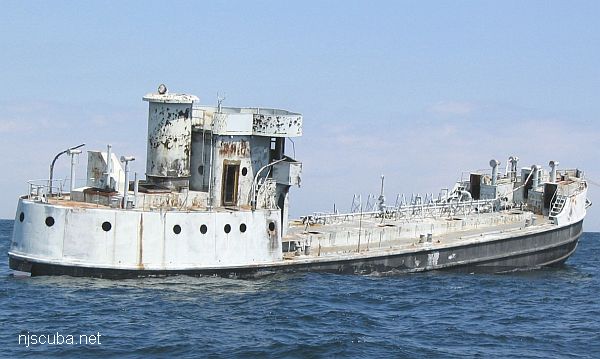
- Type:
- artificial reef, tanker, U.S. Navy
- Built:
- 1943, Ira S. Bushey & Sons, Brooklyn NY USA
- Specs:
- ( 156 x 30 ft ) 370 tons (empty) 1000 tons (full)
- Sunk:
- Tuesday May 17, 2005 - Garden State North Artificial Reef
- GPS:
- 39°37.856' -74°00.986'
- Depth:
- 80 ft




"Helis" is a twin to the Sam Berman and the Jet Trader. YO-153 was the class-ship of her class ( the first one. )
HITTING BOTTOM
'PUBLIC HOUSING FOR FISH'
ARTIFICIAL REEFS
World War II Navy tanker sunk 6.5 miles off Harvey Cedars on Long Beach Island becomes the 134th vessel sunk on New Jersey artificial reefs.
First of three decommissioned ships pledged this year by state Department of Environmental Protection with $100,000 in state funding, part of acting Gov. Codey's "Coast 2005" ocean initiatives.
New Jersey's 14 reef sites increase fish productivity of coastal waters and provide one out of every five fish caught by anglers, according to a study by the state Division of Fish and Wildlife.
Source: NJ DEP
Decommissioned Navy tanker gets new life on the ocean floor as part of artificial reef
Asbury Park Press 05/18/05
BY KIRK MOORE
STAFF WRITER
Air and foaming seawater hissed from open hatches as the World War II Navy tanker sank, its stern hitting the seafloor 80 feet below with an audible thump. Onlookers cheered as the ship began to settle upright - a perfect landing, for the benefit of divers and fishermen soon to be swarming over the new wreck.
"This project has been great for everyone. Years ago, every wreck out there was like a secret thing. Now, if it wasn't for these reefs, there wouldn't be enough places for all these boats to go, " said Angelo Eppolito, captain of the Barnegat Light dive boat Gypsy Blood. It served as a mobile observation boat, drifting over the Garden State North artificial reef site 6.5 nautical miles off Harvey Cedars.
On Tuesday the state Department of Environmental Protection delivered the first of three decommissioned ships that DEP Commissioner Bradley M. Campbell pledged for the reefs this year, using $100,000, the first time taxpayer funds have been appropriated for reef-building.
"They're allocating money on their own for the first time, and that's a good thing," said Steven Nagiewicz, a Point Pleasant Beach dive boat captain who with other divers is promoting legislation that would provide $50,000 apiece for New Jersey to acquire bigger government surplus ships.
In more than 20 years of relying mostly on private donations and in-kind support, New Jersey's artificial reef program has grown into one of the largest efforts in American waters. State wildlife officials say the reefs generate $50 million a year in the fishing and diving industries. One state study has estimated increased biological productivity from the 14 offshore fish havens supplies 20 percent of the fish caught by New Jersey fishermen.
Farewell to YO-153
On Tuesday morning, workers from Shamrock Towing in Ocean City towed the 170-foot Navy vessel to the reef site, a 1.1-square-mile square off Long Beach Island. Built in 1943 as a yard oiler - a small tanker that refueled warships at dockside - the little ship once known as YO-153 served the Philadelphia Navy Yard.
The government offers old ships for free, but transportation and Coast Guard-supervised cleaning must be financed by the state. Once at the reef site, Shamrock workers cut holes in the hull and opened valves below the waterline. A towboat held the ship in its designated position while it slowly flooded. "If boats always sank this slow, no one would drown, " Eppolito said. Over the radio, a worker observed: "When you think about all the wrecks off this coast, and this one takes five or six guys and a few hours to sink her."
But sink it did, to join some 44,000 cubic yards of ships, concrete, and even obsolete Army tanks sunk on the reef since the early 1980s. In coming weeks, the ship will be colonized by fish and small plants and organisms that need a hard surface to anchor themselves. On future reef charts, the ship will be dubbed "Helis, " named for the beluga whale that appeared this spring in the Delaware River, said Katherine Smith, a DEP spokeswoman.
Kirk Moore: (732) 557-5728
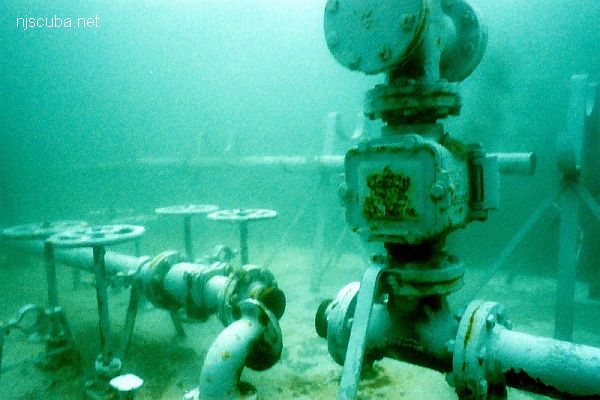
Photos of sinking courtesy Gypsy Blood dive charters

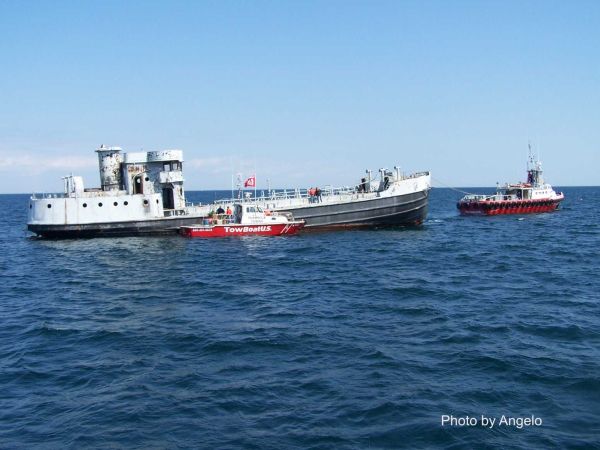
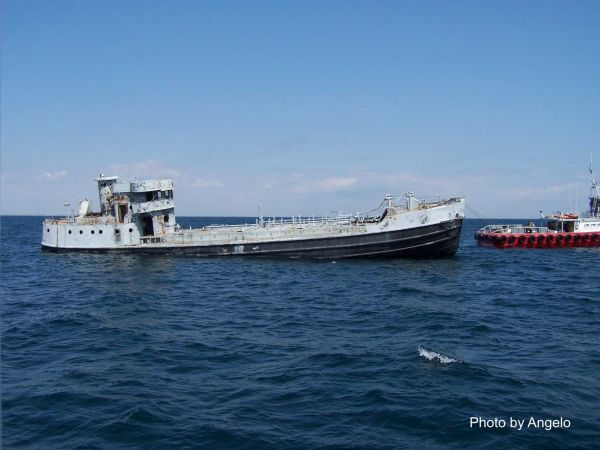
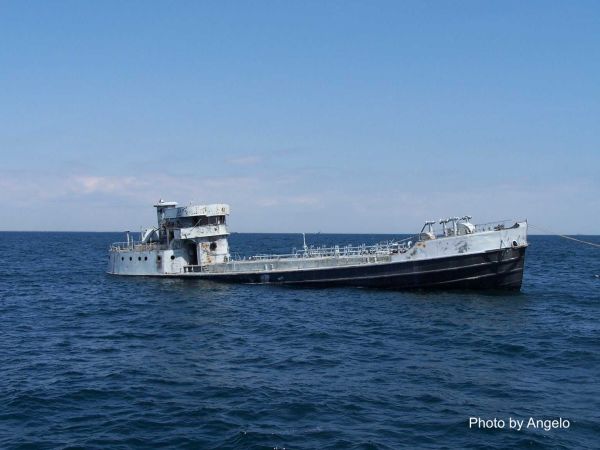
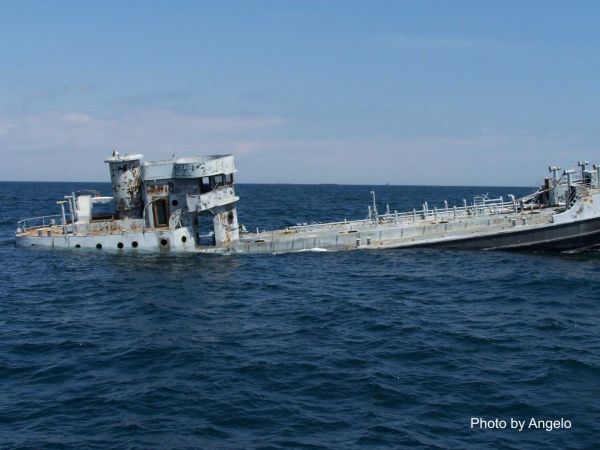


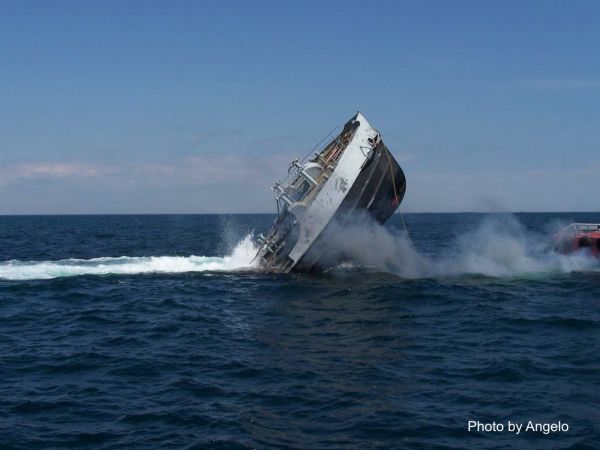
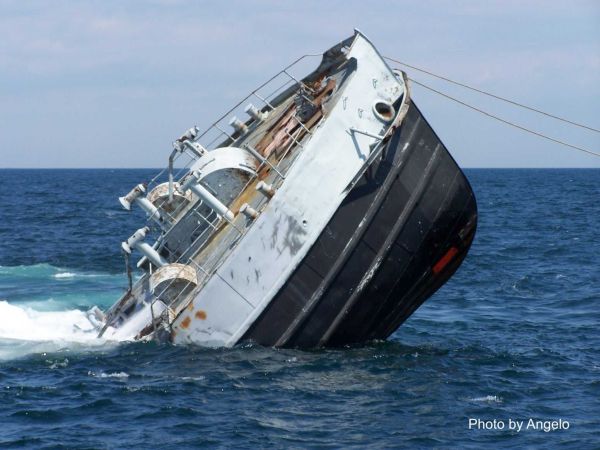
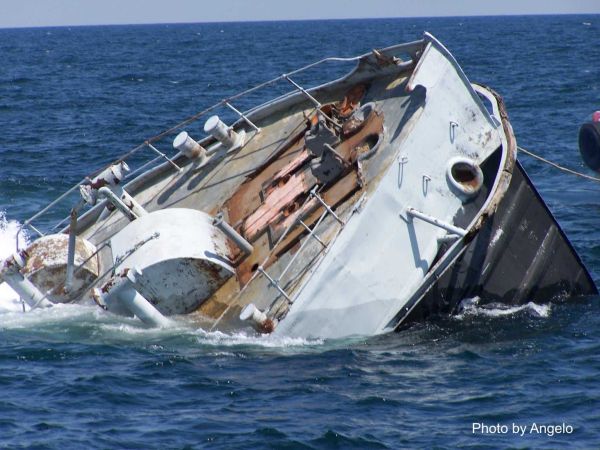
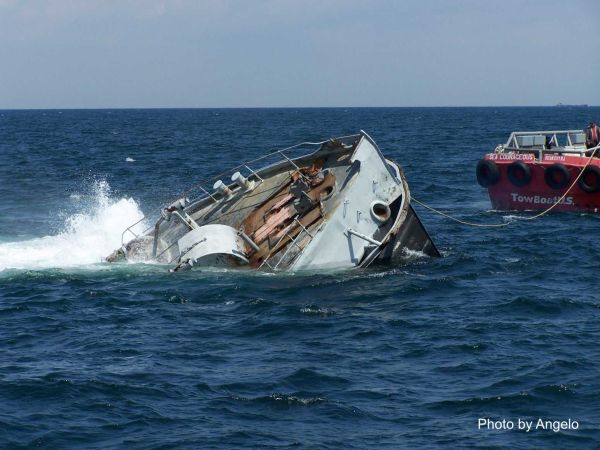
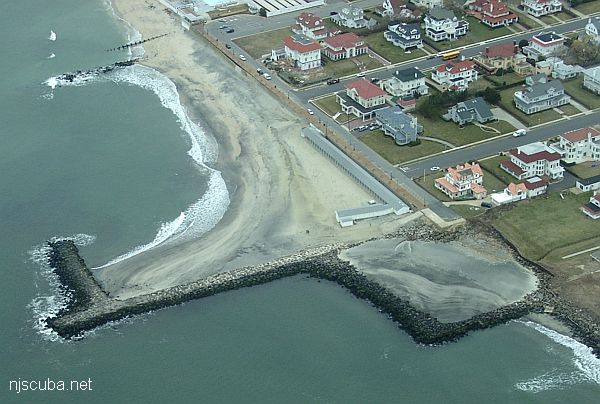
Questions or Inquiries?
Just want to say Hello? Sign the .